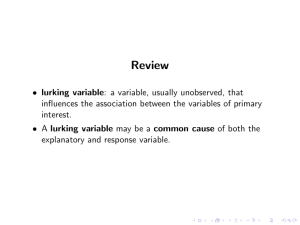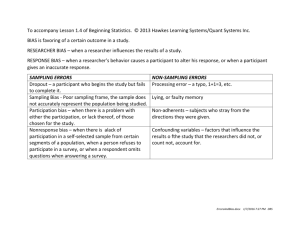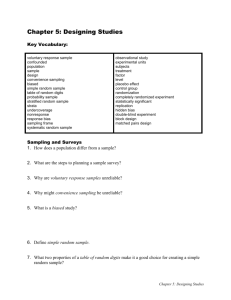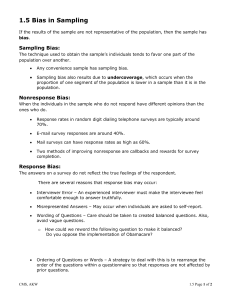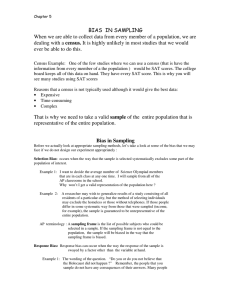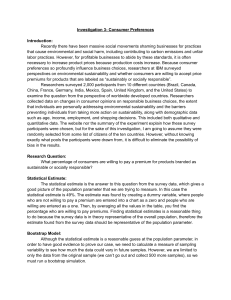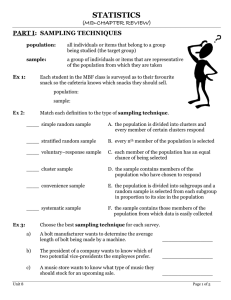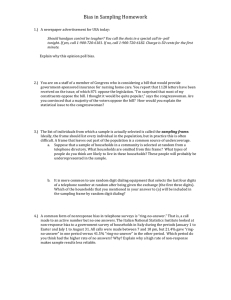Review
advertisement
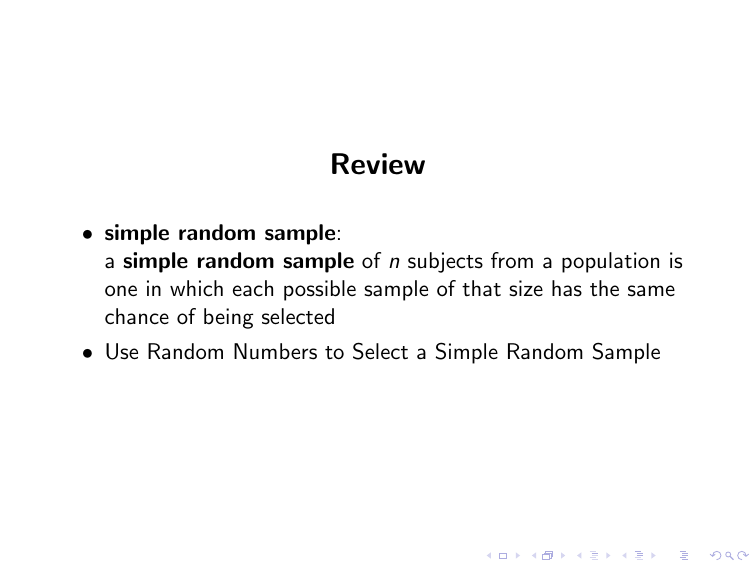
Review • simple random sample: a simple random sample of n subjects from a population is one in which each possible sample of that size has the same chance of being selected • Use Random Numbers to Select a Simple Random Sample Measuring the Accuracy of the Results from Surveys with Random Sampling • margin of error 1 approximate margin of error = √ × 100% n where n is the sample size. • bias: certain outcomes will occur more often in the sample than they do in the population due to the inappropriate way of the survey sampling bias occurs from using nonrandom samples or having undercoverage nonresponse bias occurs when some sampled subjects cannot be reached or refuse to participate or fail to answer some questions response bias occurs when the subject gives an incorrect response (perhaps lying), or the question wording or the way the interviewer asks the questions is confusing or misleading • convenience sample & volunteer sample • Large sample size does NOT guarantee an unbiased sample! Key Parts of a Sample Survey • Identify the population of all the subjects of interest. • Construct a sampling frame, which attempts to list all the subjects in the population. • Use a random sampling design. • Be cautious about sampling bias due to nonrandom samples (such as volunteer samples) and sample undercoverage, response bias from subjects not giving their true response or from poorly worded questions, and nonresponse bias from refusal of subjects to participate.



